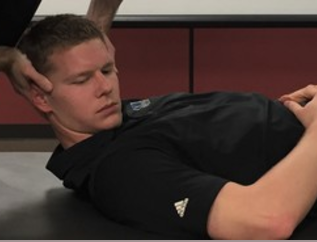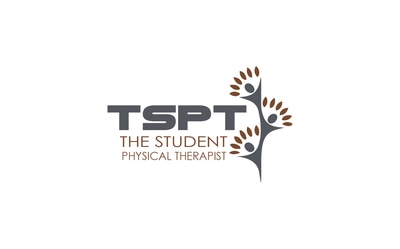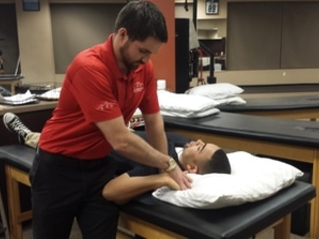- Home
- About Us
- TSPT Academy
- Online Courses
-
Resources
- Newsletter
- Business Minded Sports Physio Podcast
- Day in the Life of a Sports PT
- Residency Corner
-
Special Tests
>
-
Cervical Spine
>
- Alar Ligament Test
- Bakody's Sign
- Cervical Distraction Test
- Cervical Rotation Lateral Flexion Test
- Craniocervical Flexion Test (CCFT)
- Deep Neck Flexor Endurance Test
- Posterior-Anterior Segmental Mobility
- Segmental Mobility
- Sharp-Purser Test
- Spurling's Maneuver
- Transverse Ligament Test
- ULNT - Median
- ULNT - Radial
- ULNT - Ulnar
- Vertebral Artery Test
- Thoracic Spine >
-
Lumbar Spine/Sacroiliac Joint
>
- Active Sit-Up Test
- Alternate Gillet Test
- Crossed Straight Leg Raise Test
- Extensor Endurance Test
- FABER Test
- Fortin's Sign
- Gaenslen Test
- Gillet Test
- Gower's Sign
- Lumbar Quadrant Test
- POSH Test
- Posteroanterior Mobility
- Prone Knee Bend Test
- Prone Instability Test
- Resisted Abduction Test
- Sacral Clearing Test
- Seated Forward Flexion Test
- SIJ Compression/Distraction Test
- Slump Test
- Sphinx Test
- Spine Rotators & Multifidus Test
- Squish Test
- Standing Forward Flexion Test
- Straight Leg Raise Test
- Supine to Long Sit Test
-
Shoulder
>
- Active Compression Test
- Anterior Apprehension
- Biceps Load Test II
- Drop Arm Sign
- External Rotation Lag Sign
- Hawkins-Kennedy Impingement Sign
- Horizontal Adduction Test
- Internal Rotation Lag Sign
- Jobe Test
- Ludington's Test
- Neer Test
- Painful Arc Sign
- Pronated Load Test
- Resisted Supination External Rotation Test
- Speed's Test
- Posterior Apprehension
- Sulcus Sign
- Thoracic Outlet Tests >
- Yergason's Test
- Elbow >
- Wrist/Hand >
- Hip >
- Knee >
- Foot/Ankle >
-
Cervical Spine
>
- I want Financial Freedom
- I want Professional Growth
- I want Clinical Mastery
Upper Limb Neural Tension Test - Radial (ULNT)
Purpose: To assess the contributions of neural tension to the patient’s symptoms.
Test Position: Supine.
Performing the Test: Patient is lying in diagonal position on the table with shoulder off edge of table. Clinician is facing towards the patients feet. Clinician uses thigh closer to patient to depress shoulder. Use other hand to grasp patient’s hand and place arm in 10 degrees of abduction and fully extended elbow. Medially rotate the shoulder, pronate the forearm, and flex the wrist and fingers. Abduct the shoulder until neural symptoms are reproduced. Have patient laterally flex or rotate their head away (worsens pain/symptoms) and toward the arm (relieves pain/symptoms) - a positive test.
Diagnostic Accuracy: Unknown.
Importance of Test: As nerves travel through our body they can become adhered to the tissues they come in contact with. When stressed, these nerves reproduce neural symptoms such as pain, tingling, numbness, stretching sensation, etc. This test works by putting the radial nerve on tension, because it passes through the thoracic outlet and on the posterior aspect of the upper arm, forearm, and hand. The addition of cervical motion to alter the symptoms can help determine if the cervical region is involved.
Note: tests should only be performed by a properly trained health care practitioner.
Test Position: Supine.
Performing the Test: Patient is lying in diagonal position on the table with shoulder off edge of table. Clinician is facing towards the patients feet. Clinician uses thigh closer to patient to depress shoulder. Use other hand to grasp patient’s hand and place arm in 10 degrees of abduction and fully extended elbow. Medially rotate the shoulder, pronate the forearm, and flex the wrist and fingers. Abduct the shoulder until neural symptoms are reproduced. Have patient laterally flex or rotate their head away (worsens pain/symptoms) and toward the arm (relieves pain/symptoms) - a positive test.
Diagnostic Accuracy: Unknown.
Importance of Test: As nerves travel through our body they can become adhered to the tissues they come in contact with. When stressed, these nerves reproduce neural symptoms such as pain, tingling, numbness, stretching sensation, etc. This test works by putting the radial nerve on tension, because it passes through the thoracic outlet and on the posterior aspect of the upper arm, forearm, and hand. The addition of cervical motion to alter the symptoms can help determine if the cervical region is involved.
Note: tests should only be performed by a properly trained health care practitioner.
Copyright © The Student Physical Therapist LLC 2023



